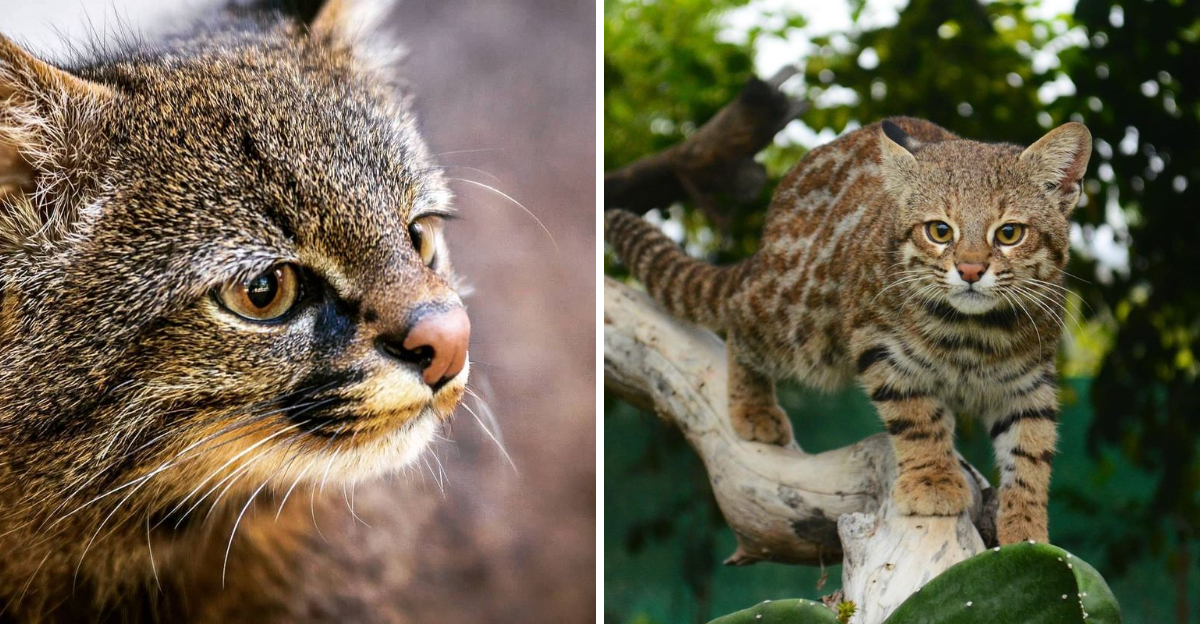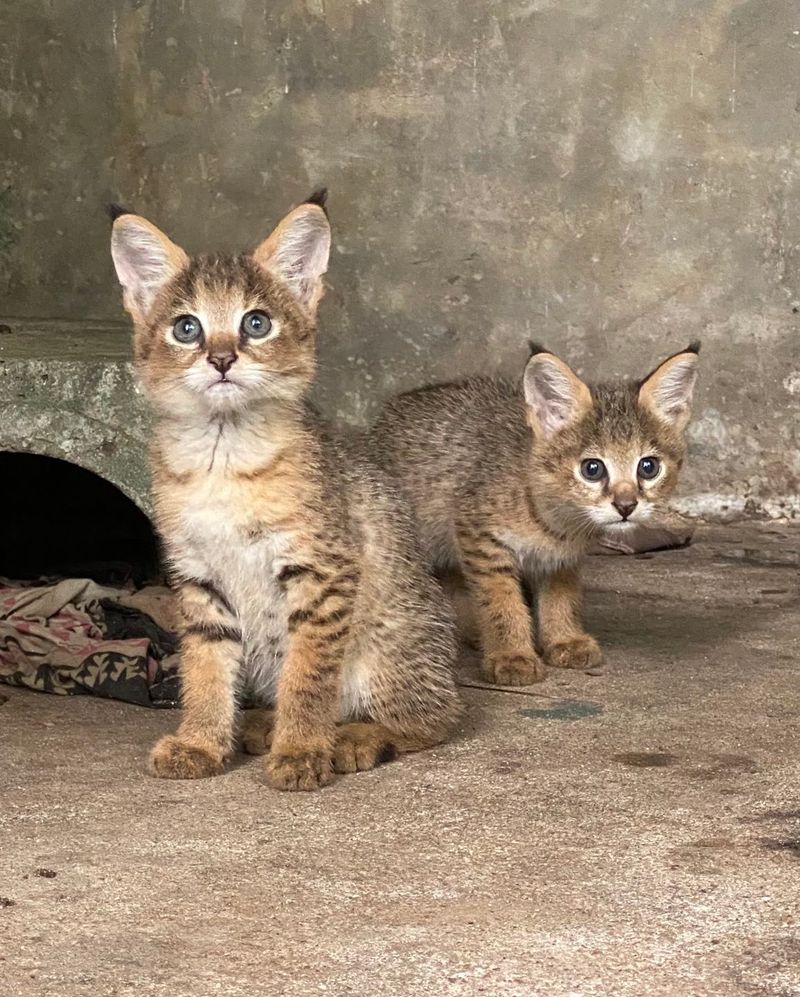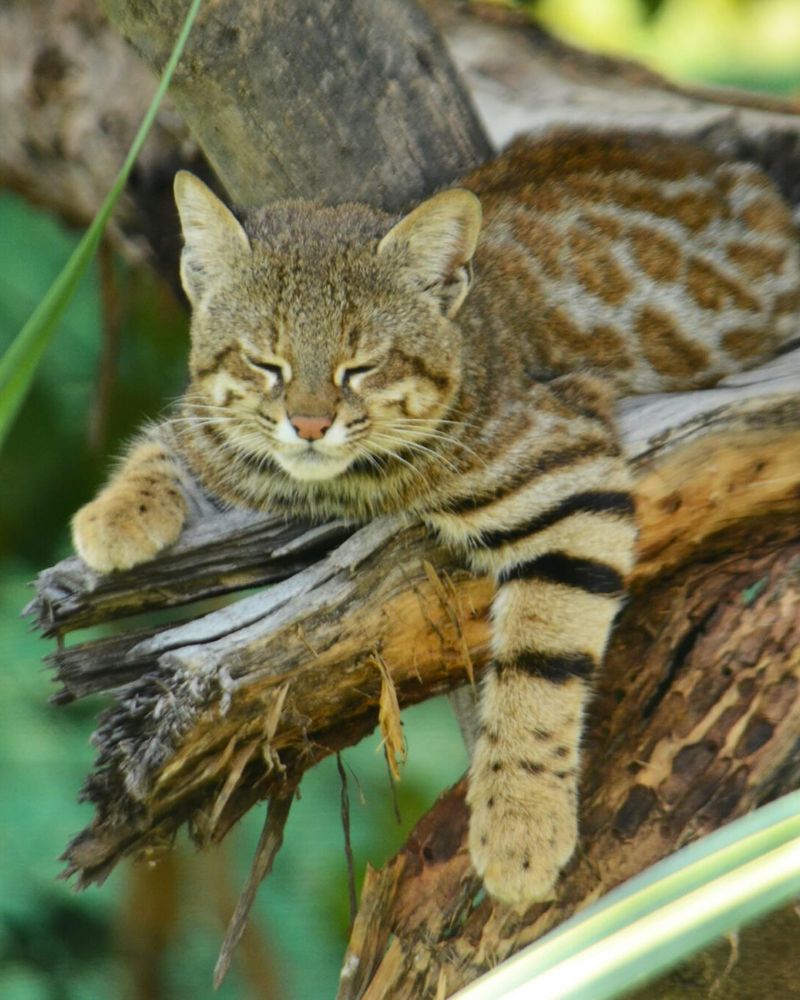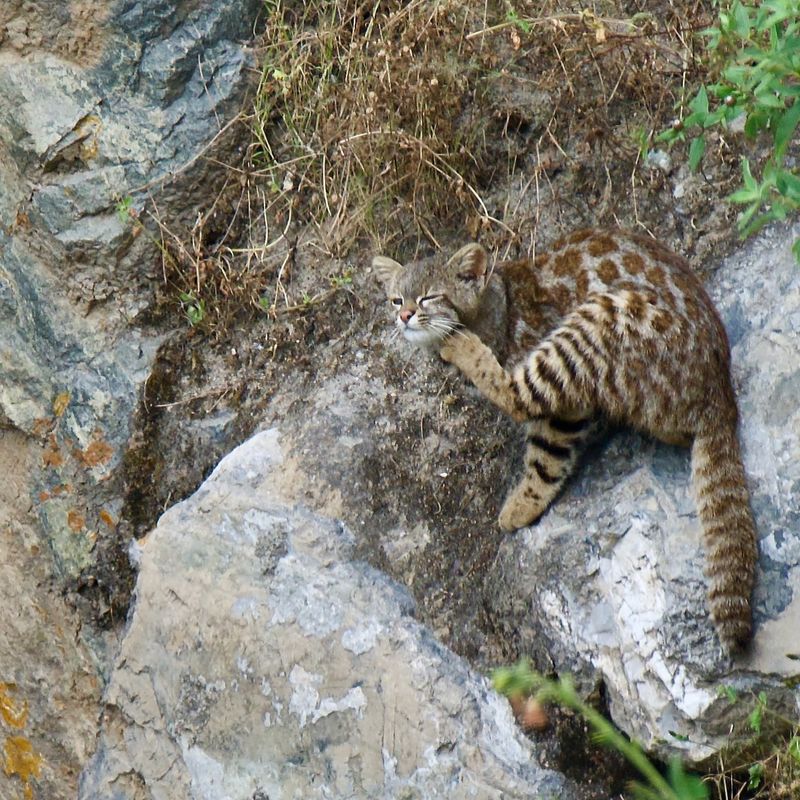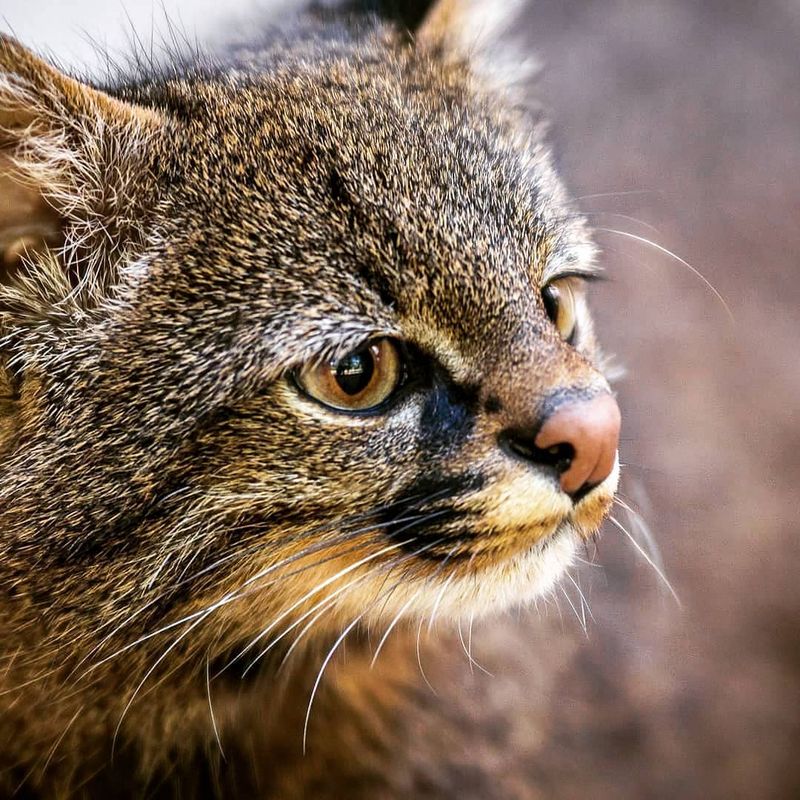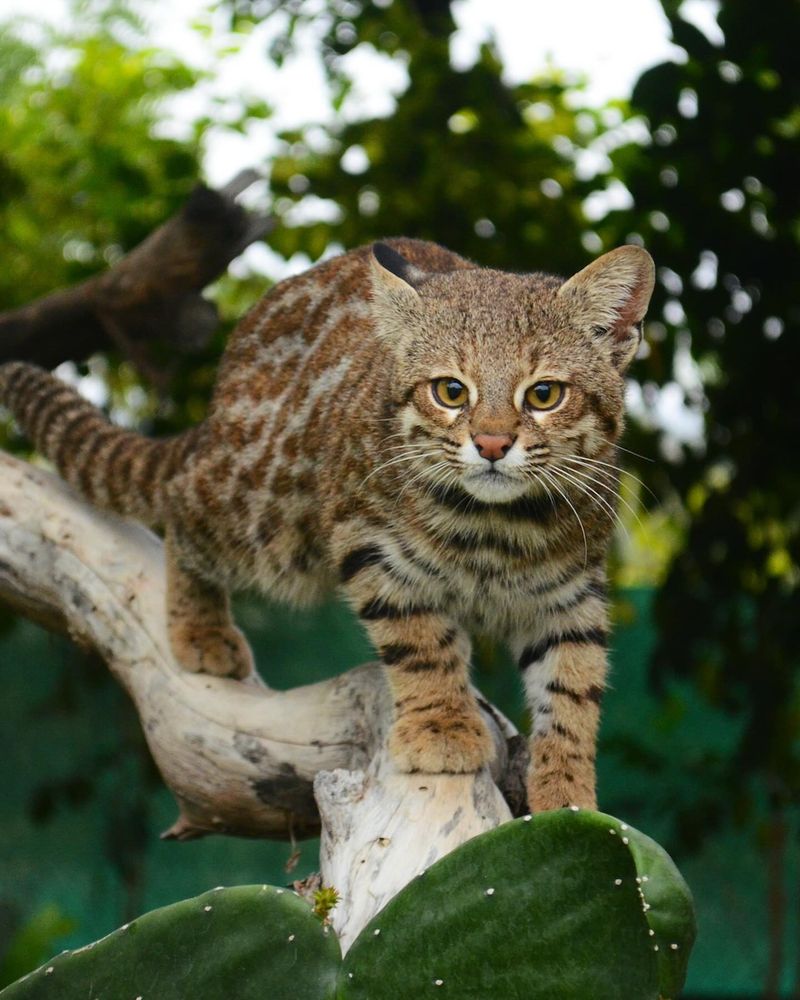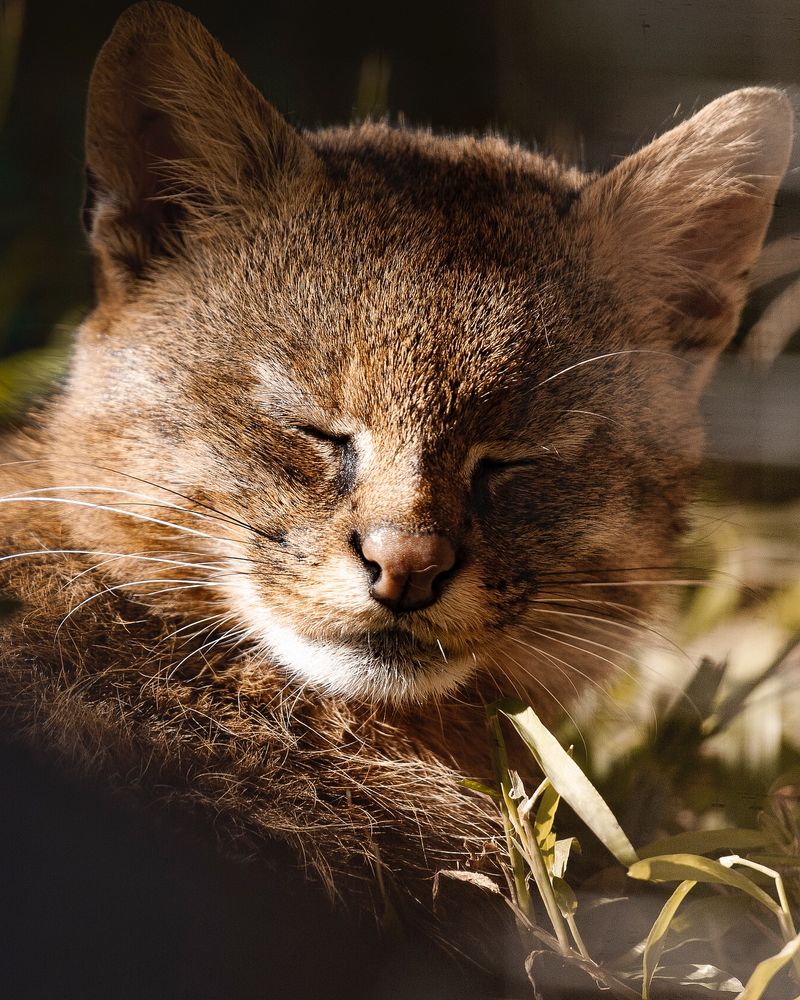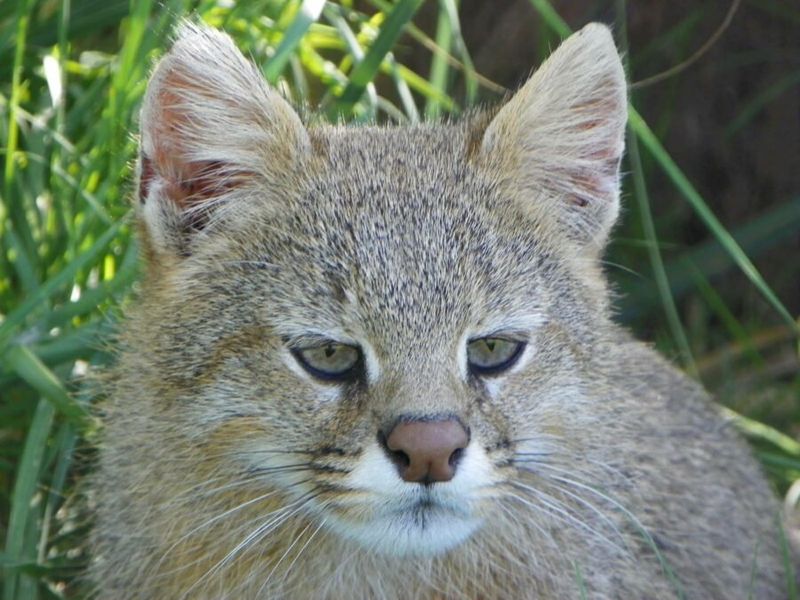📖 Table of Content:
Across the vast grasslands and towering mountains of South America, a secretive wild cat prowls—rarely seen, yet remarkably adaptable. The Pampas cat ranges from Ecuador to Argentina, but despite this wide territory, it remains one of the continent’s most mysterious and least understood animals.
With a coat that changes dramatically depending on its environment, this medium-sized feline has long puzzled scientists, who once mistook its regional variations for entirely different species. Thanks to modern DNA research, we now know these diverse appearances belong to a single species, one uniquely shaped by its varied habitats, from cold Andean peaks to warm lowland grasslands.
Yet much about the Pampas cat’s behavior, family life, and population remains hidden, guarding its secrets beneath the surface of South America’s wild places. Join us as we delve into the fascinating world of the Pampas cat—its camouflage, hunting skills, survival in extreme conditions, and deep cultural ties—revealing a wild feline that continues to captivate and confound.
1. Masters of Disguise in Plain Sight
Pampas cats are natural camouflage experts, blending perfectly into their surroundings with fur that ranges from silvery-gray to reddish-brown depending on their habitat. Their coat patterns vary dramatically across South America, with some sporting bold spots while others have reddish stripes.
This remarkable variation once led scientists to classify them as eight different species! Only recently did DNA testing reveal they’re all the same animal adapting to different environments.
A Pampas cat in the Andean highlands looks so different from its grassland cousin that even experienced wildlife guides might mistake them for different species.
2. Night Prowlers with Special Hunting Skills
Under the cover of darkness, Pampas cats transform into efficient hunters. Their large eyes collect available light, giving them vision six times better than humans at night. They stalk their prey with incredible patience, sometimes remaining motionless for over an hour.
Unlike many cats, they don’t rely solely on speed. Instead, they use clever ambush tactics, waiting beside rodent trails or bird nesting areas. Their whiskers are so sensitive that they can detect prey movements through the slightest air disturbance.
3. High-Altitude Mountain Survivors
Among wild cats, Pampas cats hold an impressive record as high-altitude specialists. Some populations thrive at elevations of 16,500 feet (5,000 meters) in the Andes Mountains, higher than many humans can comfortably live!
Their bodies have adapted with extra-thick fur and specialized blood cells that capture oxygen more efficiently than their lowland relatives. These adaptations allow them to hunt successfully where the air contains 40% less oxygen than at sea level.
Scientists have recorded these tough cats surviving in areas where nighttime temperatures regularly plunge below freezing, proving their remarkable resilience in extreme environments.
4. Shape-Shifters Across the Continent
The Pampas cat performs a remarkable trick across South America – it changes its entire appearance based on where it lives! In Argentina’s lowlands, they appear smaller with pale, subtly marked coats. Travel to the Ecuadorian mountains, and you’ll find stockier cats with rich reddish fur and bold markings.
This extreme variation confused biologists for decades. Recent studies show these differences developed as the cats adapted to different habitats over thousands of years.
A single species shouldn’t look so different across its range, yet the Pampas cat breaks this rule. Some populations are so distinct that they’ve evolved unique hunting styles to match their specific environments.
5. Secret Family Life in Hidden Dens
Almost nothing is known about the Pampas cat family life – that’s how secretive these cats are! The few observations suggest mothers raise their kittens alone in well-hidden rock crevices or abandoned burrows. They typically have 2-3 kittens per litter.
Researchers recently discovered something surprising: father cats sometimes visit their kittens, bringing food and even playing with them. This behavior is unusual among wild cats, where males typically have no role in parenting.
Kittens develop quickly, learning to hunt by 4 months old. Their mother teaches hunting techniques through demonstration, allowing the young cats to practice on small prey she’s caught.
6. Ancient Cultural Connections
Long before scientists documented the Pampas cat, indigenous South American cultures held these mysterious felines in high regard.
Ancient Andean civilizations featured them in pottery, textiles, and religious ceremonies over 2,000 years ago. The Moche people of Peru created detailed ceramic vessels depicting Pampas cats, suggesting they held spiritual significance. In some regions, native communities believed these cats could communicate with mountain spirits and bring rain during droughts.
Even today, some traditional communities avoid hunting these cats, considering them guardians of the grasslands. This cultural protection may have helped Pampas cats survive in areas where other wild species have disappeared.
7. Conservation Challenges in Changing Landscapes
Pampas cats face growing threats as their habitats shrink. Grasslands are rapidly converted to farmland, while mining operations fragment mountain territories. These shy cats avoid areas with human activity, making each development a loss of their territory.
Climate change poses another challenge. As temperature patterns shift, the specialized plants and prey animals these cats depend on may disappear from traditional hunting grounds. Conservation efforts are complicated by how little we know about them.
Scientists are now using camera traps and GPS tracking to map territories and population sizes. Some conservation groups work with local farmers to develop land-use practices that allow these remarkable cats to survive alongside human communities.
